It's Admissions Season!
Register for a tour or inquire to learn more about WSP’s transformative preschool-12th education.
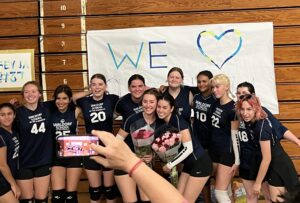
Congratulations to our Co-Ed Middle School Cross Country team who ended their season earlier this week. They had a tremendous season and the girls earned a third place trophy in the league finals this week.
Our Middle School Girls’ Volleyball team also finished up their season with a great win vs Synapse and their last game against Hausner. I’m so proud of everyone and happy to witness their growth. I hope this season helped our players develop a strong passion for volleyball.
The Middle School Golf Team has a league tournament next week and its great to see them continue to improve weekly!
 Our HS Girls’ Volleyball team had a fantastic 3 – 0 win over Liberty Baptist earlier this week, and closed out their season last night against Kahn Labs last night with another 3 – 0 win! Congratulations to our team and our two senior players, Maya & Frejya! Great season everyone!
Our HS Girls’ Volleyball team had a fantastic 3 – 0 win over Liberty Baptist earlier this week, and closed out their season last night against Kahn Labs last night with another 3 – 0 win! Congratulations to our team and our two senior players, Maya & Frejya! Great season everyone!
We have several other sports starting their seasons soon. Email me if you’d like more information and to register.
Middle School:
High School:
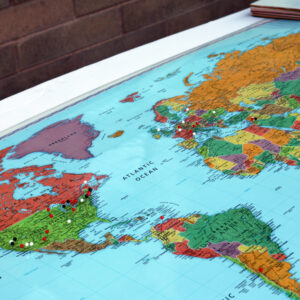
What is DEIJ?
DEIJ stands for Diversity, Equity, Inclusion, and Justice. Put simply, it means working to create a space where everyone sees themselves reflected in our community and where our community enjoys the benefits of each person’s ability to participate fully, creating a sense of true belonging.
Why DEIJ?
WSP’s vibrant and diverse community of people come from all over the world. We have families representing every major religion, with ties to every continent. Our community has families in all shapes and sizes with family members with different gender identities and orientations.
What is the DEIJ Corner?
WSP’s DEIJ committee meets weekly to plan professional development workshops, study related topics and work on projects related to DEIJ. In the DEIJ Corner, we will report to the community on our work, share resources, and provide information.
This month we are spotlighting the local group, Girls Leadership. They were founded in Oakland in 2008; and offer workshops, professional development and classes for students from K-12th grade as well as adults. Many of their materials are offered for free, such as SEL (social-emotional learning) check-in materials or their workshop on Belonging in Basketball, offered through a partnership with the WNBA.
I’ve found their Bias Intervention and Developing Culturally Responsive Mindsets workshops particularly useful for my work at WSP. As a parent, I’m currently taking a Girl & GrownUp class with my daughter about friendship, managing conflict, learning to set boundaries, and find her own voice. I’ve found this one to be helpful, not only by providing skill sets, but also by creating a space for us to talk about some of the social challenges she is facing.
Keep an eye out for future updates from WSP’s DEIJ committee in our DEIJ corner. If you have any suggestions for resources or comments, please contact us via email.
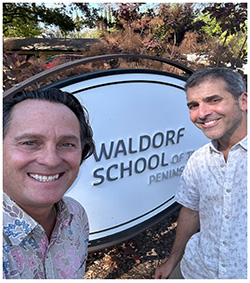

Last Friday, the WSP faculty and administration were busy learning and training. There was time dedicated to rethinking Waldorf curriculum, and emergency preparedness, but the most significant amount of time and energy was dedicated to learning more about neurodiversity and Diversity, Equity, and Inclusion with Dan Lebowitz. His presentation was entitled: Neurodiversity meets Diversity, Equity, and Inclusion: Mindsets and Scaffolds that Support All Kinds of Minds. Here’s what Dan shared after his time with at WSP:
“Thank you for the opportunity to visit WSP and explore the topic of neurodiversity with your faculty and administration. A shared interest in meeting the needs of all students, especially those who think differently, was palpable. Community members celebrated what was working and welcomed ideas for making responsive changes.”
Dan provides educational consulting services to students, families, and schools in Marin County, the larger Bay Area, and beyond. He combines 25 years of experience in K-12 schools with expertise in learning disabilities, ADHD, executive function, and assistive technologies. Dan integrates his experience as a dad of two boys twelve and fourteen years old, as well as working with parents, helping them navigate many of the challenges, joys, and predictable problems that arise at school and in the home.
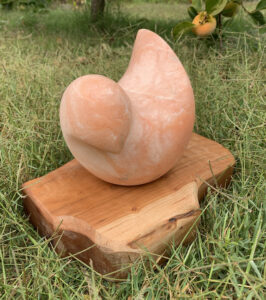
The will to work. The will to persevere at discarding the superfluous. The will to develop the skills, and the will to use them diligently without interruption or distraction is a noteworthy undertaking these days…for anyone, especially a teenager. Not just any adolescent but those who are about to take what might be considered a first (nearly completely) self-directed step toward adulthood; high school seniors who are busy getting ready to embark on their post high school path toward their yet to be revealed futures.
Carving stone to wrest free a satisfactory three-dimensional form is a perfect task for flexing valuable capacities, not least of which is to sustain work with rigor. The work of reductive carving: to hold a form in the mind’s eye and manifest it by laboriously removing what isn’t it. Sounds simple; it’s not. Nor is developing the hammer and chisel coordination and strength of hand to get the task done until what was grasped in the mind’s eye is manifest in substance and held in the very hands that pound it into existence.
We never have enough session hours for such an undertaking, but undertake it the students do nonetheless. Whether or not it is managed to completion (it is such a joy when it is), the journey of application is a worthy and important one. The ability to sustain work through one’s own self-discipline and self-directed will is invaluable. Effort to cultivate this ability is well worth the time. Practicing by attempting to manifest some of the aesthetics of three-dimensional form via stone carving is not only the perfect metaphor, it is truly the perfect medium. Striving at developing capacities to perceive what is hidden, to initiate and sustain work, and to manifest one’s goals will serve the students well. It strengthens their wings as they prepare to fly forward.
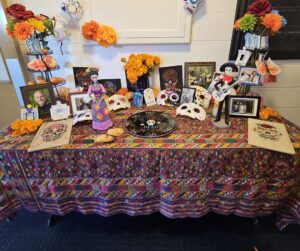

Celebrating El Día de los Muertos at the Waldorf School of the Peninsula is a cherished tradition. I have a deep connection to this holiday, and will lead the celebration this year. The school joins in the joyful celebration of the Day of the Dead, which takes place over three days; the multi-day holiday beginning on October 31 (All Hallow’s Eve), continuing on November 1 (Día de los Inocentes, or All Saints Day), and ending November 2 (Día de los Difuntos, or All Souls Day). It is celebrated in Mexico and beyond as a vibrant tribute to those who have passed away and a time to pay respects to our dearly departed.
My roots are in Mexico, and I share my childhood memories of the Day of the Dead, especially those moments with my grandmother, filled with the sights and aromas of the occasion, not to mention the delicious food.
El Día de los Muertos is a tapestry of Indigenous, Pre-Hispanic, and Spanish/Catholic traditions passed down through generations. It is a time when the boundary between the living and the deceased blurs, allowing loved ones who have passed on to visit once more. Traditional decorations include papel picado, symbolizing the wind, one of the elements of life, and sugar skulls, representing the departed souls. Marigolds, known as Cempasúchil in Aztec culture, have a strong connection to this holiday, dating back to Aztec funeral rituals.
Leading up to El Día de los Muertos at the Waldorf School of the Peninsula, students immerse themselves in the festival’s history and significance while crafting their own ofrendas (offerings for loved ones) and bringing some from home. These ofrendas are lovingly placed on the school altar, which serves as a symbol of celebration and remembrance, not a religious artifact. Students visit the altar, savor pan de muerto (bread adorned with sugar), and tenderly present their offerings to honor their loved ones.
Forms of celebration vary, but typically an altar is set up in a home and laden with offerings to help the dead on their journey. The altar usually contains three levels representing heaven, earth, and the underworld, and can include items representing the four elements—water to quench thirst, fire in the form of candles to light the way, wind represented by incense from copal tree resin, and earth with food for sustenance on the journey.
The fascinating coincidence of the monarch butterfly’s 3,000-mile migration to Mexico aligns with El Día de los Muertos, and some believe these butterflies represent the souls of departed loved ones returning.
Whether celebrated at the school or elsewhere, El Día de los Muertos is a day to revere and remember the deceased, ensuring that they remain in our hearts and are never forgotten. During times of collective loss and separation, this celebration holds special significance for the school’s students, families, and community, as it reminds us to cherish and honor those who have left us.